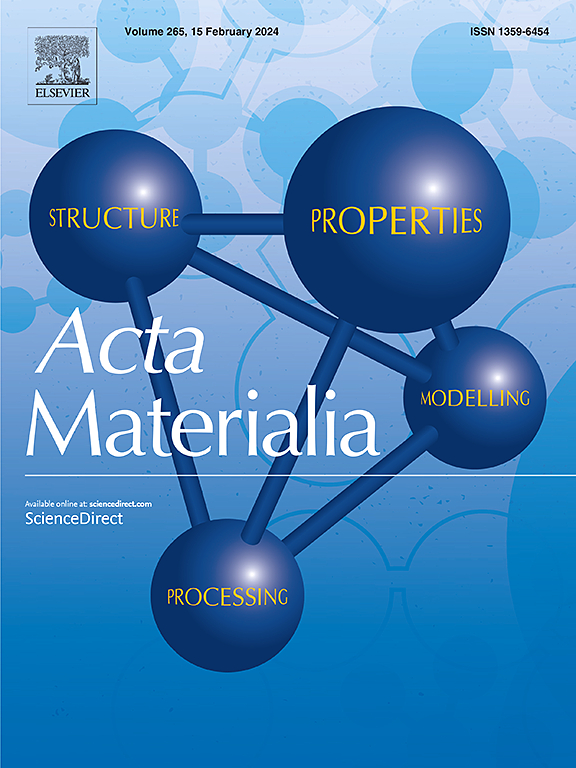高光电性能光响应锌离子电池中嵌入策略促进光子生成载流子迁移过程
IF 9.3
1区 材料科学
Q1 MATERIALS SCIENCE, MULTIDISCIPLINARY
引用次数: 0
摘要
光生电荷迁移速率与氧化还原反应速率之间的严重不匹配是制约光响应锌离子电池性能的主要因素。有机分子嵌入可以通过氢键诱导均匀稳定的晶格结构调制。本文设计了2-甲基咪唑插层V2O5光电阴极(NVO)。2-甲基咪唑通过氢键与V2O5中的氧原子相互作用实现能带结构和电荷离域调制。理论计算表明,NVO中过渡金属原子轨道的重叠明显增强,导致带隙减小,载流子迁移的能垒降低。NVO电子态密度的增强有利于载流子的分离和迁移特性,从而降低载流子复合的概率。实验结果表明,在模拟太阳辐照下,NVO-50光电阴极在0.5 a g-1电流密度下的放电容量增长率为44%,超过了以往报道的钒基材料。本研究为开发高光电性能的有机分子插层光电阴极材料提供了新的思路,可促进光响应锌离子电池的发展。本文章由计算机程序翻译,如有差异,请以英文原文为准。


Boosting photon-generated carrier migration process through intercalation strategy for highly photoelectric performance photo-responsive Zinc-Ion batteries
The serious mismatch between the photogenerated charge migration rate and the redox reaction rate is a major limitation to the properties of photo-responsive zinc-ion batteries (PZIBs). Organic molecular intercalation can induce uniform and stable lattice structure modulation through hydrogen bonding. In this work, 2-methylimidazole intercalated V2O5 photocathode (NVO) is designed. Energy band structure and charge delocalization modulation is achieved by the interaction of 2-methylimidazole with oxygen atoms in V2O5 through hydrogen bonding. The theoretical calculation indicates that the overlap of the transition metal atomic orbitals in NVO is significantly enhance, which results in a decrease in the band gap and a lower energy barrier for carrier migration. The enhancement of the electron state density of NVO facilitates the carrier separation and migration properties, thereby reducing the probability of carrier recombination. The experimental results show that the NVO-50 photocathode, under simulated solar irradiation, exhibits a discharge capacity growth rate of 44 % at a current density of 0.5 A g-1, surpassing previously reported vanadium-based materials. This research offers novel insights into the development of highly photoelectric properties organic molecular intercalation photocathode materials, which can facilitate the advancement of photo-responsive zinc-ion batteries.
求助全文
通过发布文献求助,成功后即可免费获取论文全文。
去求助
来源期刊

Acta Materialia
工程技术-材料科学:综合
CiteScore
16.10
自引率
8.50%
发文量
801
审稿时长
53 days
期刊介绍:
Acta Materialia serves as a platform for publishing full-length, original papers and commissioned overviews that contribute to a profound understanding of the correlation between the processing, structure, and properties of inorganic materials. The journal seeks papers with high impact potential or those that significantly propel the field forward. The scope includes the atomic and molecular arrangements, chemical and electronic structures, and microstructure of materials, focusing on their mechanical or functional behavior across all length scales, including nanostructures.
 求助内容:
求助内容: 应助结果提醒方式:
应助结果提醒方式:


